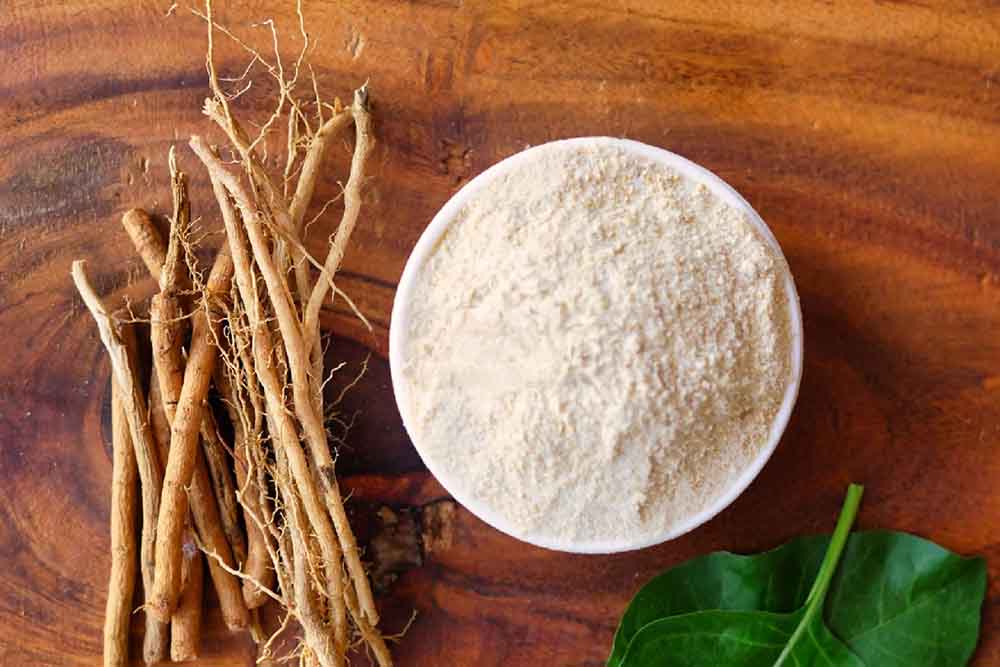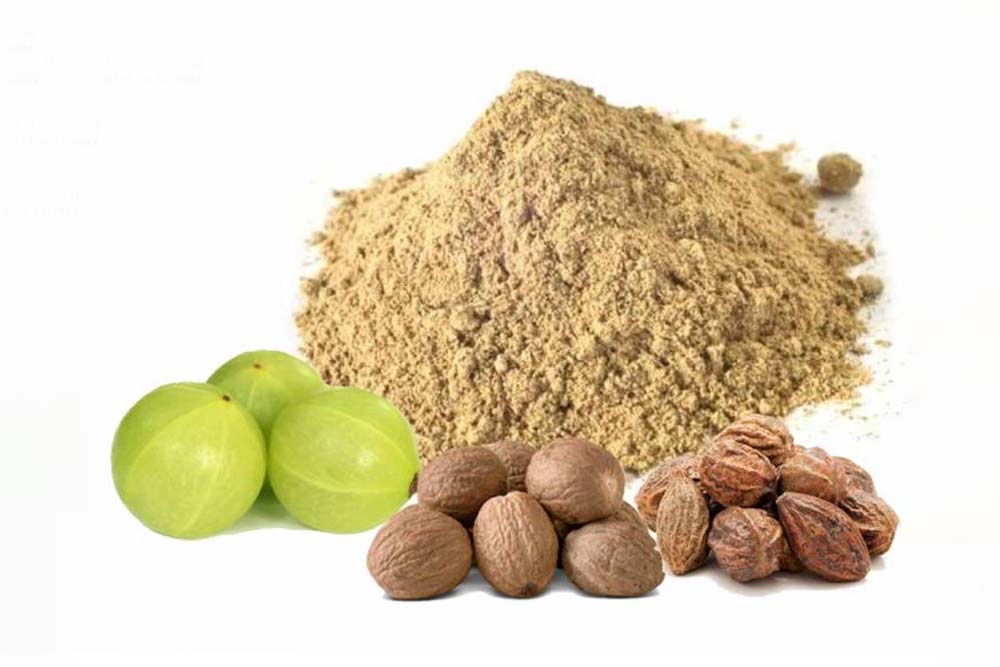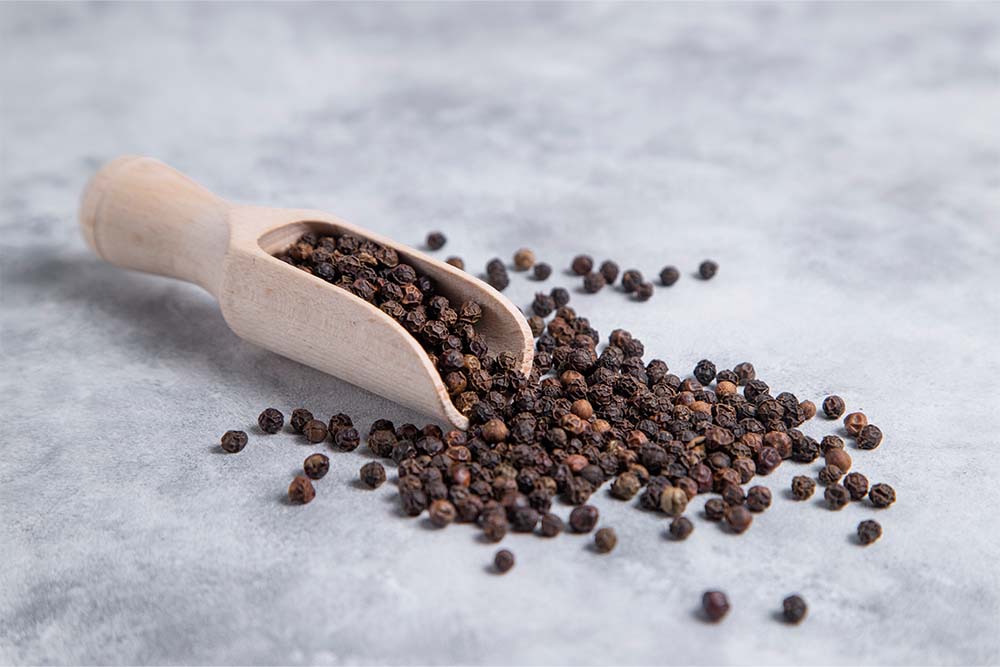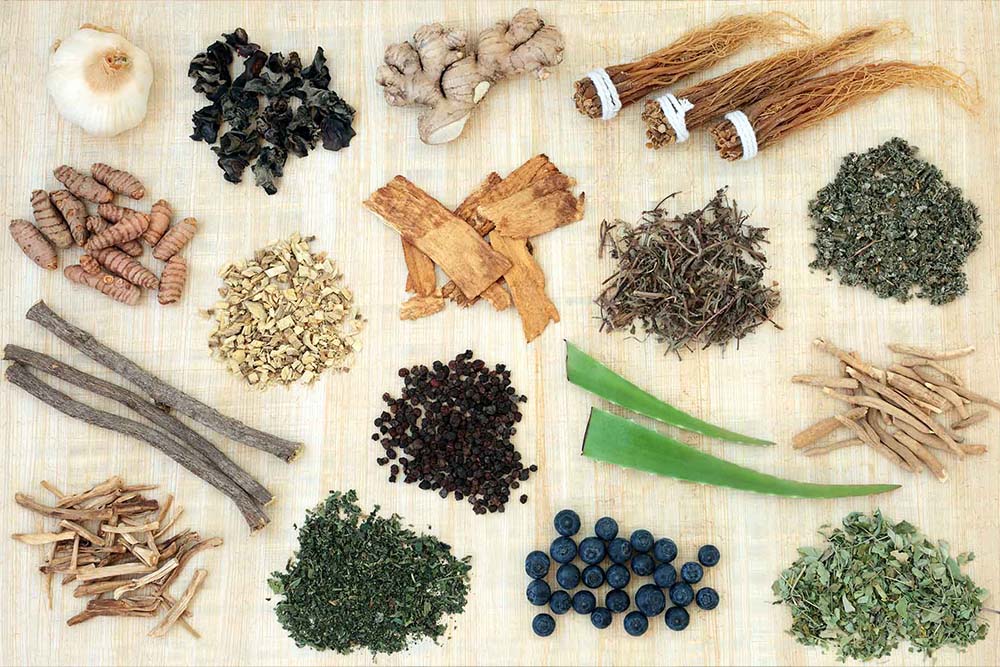Ayurveda is a medical system that believes the disease is caused by an imbalance or tension in a person’s awareness. It translates to life knowledge. Ayurvedic herbs and spices with health benefits are essential components of a holistic approach to health and wellness. They improve blood flow and circulation and remove toxins from the body through the skin. The golden rule of Ayurveda is to eat slowly and thoroughly and to cease eating when you feel entirely satisfied.
Ayurvedic medicine is becoming increasingly popular. This traditional medical practice includes several Ayurvedic plants.
Here’s a List of a Few Powerful Ayurvedic Herbs and Spices with Health Benefits
1. Ashwagandha

Adaptogens are substances that help the body’s resilience to be physical and emotional stress. Studies have shown that Ashwagandha can delay, halt, and reverse some forms of nerve cell damage, causing illnesses such as Alzheimer’s, Parkinson’s, and Huntington’s. Nonetheless, nearly all of the research on Ashwagandha and nerve cell injury in the brain has been conducted on animals or animal cells. This plant has been used as a therapeutic herb in ancient Ayurvedic medicine for thousands of years (Ayurveda).
The Ayurvedic herbs and spices, like Ashwagandha main bioactive components are naturally occurring steroids. Extracts of Ashwagandha may protect the brain from damage caused by numerous toxins, traumas, and strokes. Oral consumption increases cognitive function in both healthy and cognitively impaired persons. Ashwagandha treats depression symptoms by reducing stress and anxiety.
2. Boswellia
It is well-known for its distinct spicy, woody scent. According to research, it may be especially helpful in reducing inflammation by preventing the release of inflammatory molecules known as Leukotrienes. Boswellia looks as effective as nonsteroidal anti-inflammatory medicines (NSAIDs) in test tubes and animal tests but has fewer side effects. Boswellia has been linked in human trials to decreased pain, increased mobility, and a broader range of motion in persons with osteoarthritis and rheumatoid arthritis.
It may also aid in the prevention of dental infections and the treatment of gingivitis. Furthermore, it may help patients with ulcerative colitis and Crohn’s disease with their digestion and people with severe asthma with their breathing.
3. Triphala

Triphala churna possesses anti-inflammatory, analgesic, antibacterial, anti-arthritic, hypoglycemia, anti-ageing, and antiviral effects. It aids in treating headaches, dyspepsia, weariness, oxidative stress reduction, and infectious diseases such as TB and periodontal disease. You can take Triphala regularly because of its Rasayana (rejuvenating) characteristic, which aids in the battle against all forms of internal and external illnesses. It has potent anti-inflammatory chemicals that may aid in the prevention of some malignancies and chronic disorders.
Research suggests that Ayurvedic herbs and spices like Triphala may help relieve constipation, address dental difficulties, and encourage weight reduction. The optimal time to consume Triphala water is between 4:00 am and 5:00 am. If you don’t like the flavour of only Triphala and water, add a dash of honey to make it sweeter. The major causes of this effect are the levels of sorbitol and menthol found in Triphala.
People with low blood pressure must avoid Triphala, which lowers it even more.
4. Brahmi
Brahmi (Bacopa monieri) is a common Ayurvedic herb. According to test-tube and animal research, Brahmi appears to have powerful anti-inflammatory qualities that are as effective as typical NSAIDs. It has also been linked to improved learning rates, attention, memory, and information processing, as well as a reduction in symptoms of attention deficit hyperactivity disorder (ADHD), such as inattention, impulsivity, poor self-control, and restlessness.
Brahmi may have Adaptogenic characteristics, which means it, may assist in increasing your body’s capacity to cope with stress and anxiety. It is a common Ayurvedic herb. Brahmi is a medicinal plant with a long history of being used as a significant element in Ayurvedic adaptogens, memory enhancers, and stress relievers. It is cooling and calming and can make good supplements for Pitta optimization. It can assist in reducing Vata in mind.
5. Cumin
Flavonoids in cumin work as antioxidants in the body. By neutralizing these particles, antioxidants can help prevent illnesses like cancer, heart disease, and high blood pressure. Even at higher levels, cumin is considered safe and harmless. However, there are certain adverse effects to be aware of if you use it. Cumin is often used as a herbal supplement in doses ranging from 300 to 600 mg daily.
It’s manufactured from the seeds of the Cuminum plant, which have an earthy, nutty, and spicy flavor.
6. Turmeric

Turmeric, the spice that gives curry its distinctive yellow color, is another well-known Ayurvedic medicine. Its principal active ingredient, curcumin, has potent antioxidant and anti-inflammatory activities. According to preliminary study, it may be as effective as, if not more effective than, conventional anti-inflammatory medications – without the undesirable side effects. Turmeric may also help prevent heart disease by increasing blood flow through exercise or some prescription drugs.
It has medical effects such as increasing overall vitality, alleviating gas, dispersing worms, aiding digestion, and regulating menstruation, dissolving gallstones, and treating arthritis.
7. Echinacea

Echinacea is a blooming plant used as a popular herbal cure for colds and coughs in Ayurveda. Caffeic acid, phenolic acids, Rosmarinus acid, polyacetylenes, and other beneficial substances are found in Echinacea. They are high in antioxidants and have been linked to various health advantages, including improved chronic fatigue syndrome, reduced anxiety, helped indigestion, and reduced body pains. Reduces inflammation, chronic pain, and swelling, boost immunity, and may decrease blood sugar levels.
8. Licorice Root
The Glycyrrhiza glabra plant produces licorice roots native to Europe and Asia and plays an important role in Ayurvedic medicine. Licorice root has been shown in animal and human tests to help decrease inflammation and combat viruses and germs. It also appears to relieve sore throats and boost oral health by preventing dental cavities and Candida. However, only some studies on this root have been modest, and further study is needed to corroborate these advantages.
9. Amla (Emblica Officinalis or Indian Gooseberry)
Amla, often known as the Indian Gooseberry, is another Ayurvedic herb. The herb’s scientific name is Emblica Officinalis. It is frequently used in Ayurveda medicines and other herbs in this ancient medicinal practice. The medicinal plant Amla has several applications. Some people blend it with other herbs to make the Triphala recipe. This mixture aids in the treatment of constipation. It serves as a natural laxative for those who require it.
It has also been discovered that the mixture effectively decreases flatulence in the gastrointestinal system. Some patients claim relief from stomach discomfort when using this specific Ayurvedic mixture.
10. Haritaki
Terminalia is a tree native to India and South Asia. However, Terminalia chebula Retz is the only botanical source of Haritaki, but additional forms are mentioned in Ayurvedic scriptures. The Indian walnut or Indian hog plum are other names for the fruit. It is known as the “King of Medicines” and is frequently included first among Ayurvedic constituents in formulations. Some practitioners recommend combining it with ghee. According to Tibetan literature, different tree sections can be used for medicinal reasons.
The roots eliminate the bone disease. The steam soothes muscular pain. Ayurvedic literature mentions various forms of Haritaki, but the most significant is Vijaya, which is beneficial for many ailments (particularly cleansing).
11. Garlic
This plant is well-known for having three key ‘anti’ properties: antibacterial, antiviral, and antifungal. Aside from that, it is commonly used in home treatments for influenza, colds, and cough. Have you ever experienced terrible pain in your ear that paralyzes a portion of your face? Garlic can assist you in relieving that agonizing agony. Garlic includes important minerals, including calcium, phosphorus, and iron. Garlic contains traces of minerals such as iodine, sulfur, and chlorine.
Garlic is quite potent when consumed raw (either crushed or diced). Just one clove per day can make a significant difference in your overall health.
12. Black Pepper

Because of its high concentration of the strong, helpful bioactive component, piperine, the most versatile and widely used spice worldwide, is also employed in traditional Ayurvedic medicine. It is anti-inflammatory and antioxidant in nature. It boosts nutritional absorption (often seen in supplements as an absorption booster), supports intestinal health, provides pain relief, decreases hunger, and may enhance cognitive function. It may also decrease cholesterol, enhance blood sugar management, and fight cancer.
13. Gotu Kola
Gotu kola (Centella asiatica), sometimes known as “the herb of longevity,” is another well-known Ayurvedic medicine. It’s manufactured from a tasteless, odorless plant that grows in and around water and has fan-shaped green leaves. According to one piece of research, Gotu kola supplements may enhance people’s memory after a stroke. Furthermore, in one study, persons with a generalized anxiety disorder reported decreased tension, anxiety, and sadness after taking gotu kola for 60 days instead of pharmaceuticals.
There is also evidence that the herb may help prevent stretch marks, minimize varicose veins, speed wound healing, and alleviate eczema and psoriasis symptoms. More research, however, is required. More research is needed to prove the efficacy of Ayurvedic herbs on joint pain.
You May Also Like:

